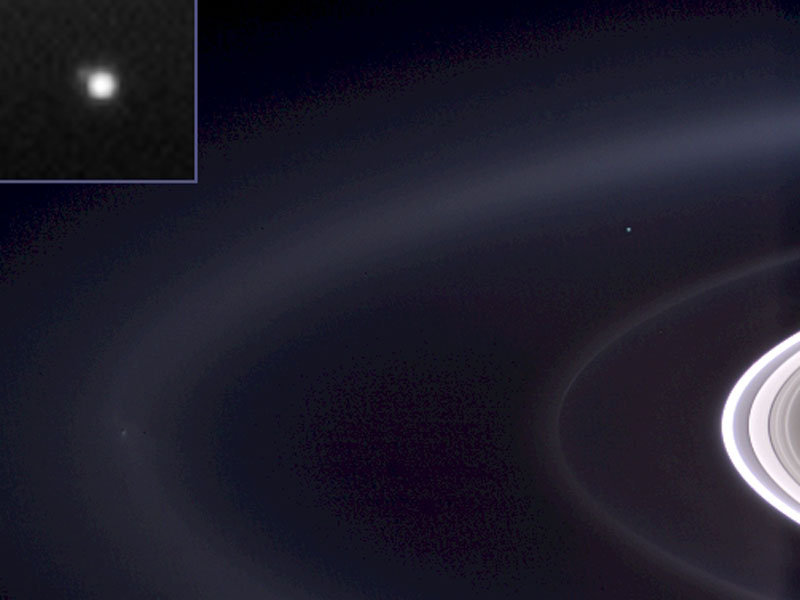Cyanobacteria create the blue hue as seen from deep space,not 03,
I prefer this stuff:
http://antwrp.gsfc.nasa.gov/apod/ap060927.html

Explanation: What's that pale blue dot in this image taken from Saturn?
Earth. The robotic Cassini spacecraft looked back toward its old home world earlier this month as it orbited Saturn. Using Saturn itself to block the bright Sun, Cassini imaged a faint dot on the right of the above photograph. That dot is expanded on the image inset, where a slight elongation in the direction of Earth's Moon is visible. Vast water oceans make Earth's reflection of sunlight somewhat blue. Earth is home to over six billion humans and over one octillion Prochlorococcus.
Prochlorococcus:
An unseen "forest" of microscopic beings fills the upper 200 meters of ocean, exerting an influence on this planet every bit as profound as the forests on land. The diverse phytoplankton species inhabiting the ocean's surface waters--which mainly consist of single-celled cyanobacteria, diatoms and other kinds of algae--form the base of the marine food web. They account for roughly half the photosynthesis on the earth, remove nearly as much carbon dioxide from the atmosphere as all land plants, and supply about half the oxygen we breathe. Without the activities of these free-floating plantlike organisms, atmospheric carbon dioxide levels would triple.
That phytoplankton could accomplish so much with so little recognition from the general public is surprising [see "The Ocean's Invisible Forest," by Paul Falkowski; Scientific American, August 2002]. Even more remarkable, scientists had no idea which microbial species performed the bulk of these vital functions until 15 years ago, when Sallie W. Chisholm of the Massachusetts Institute of Technology, Robert J. Olson of the Woods Hole Oceanographic Institution and other collaborators discovered marine cyanobacteria from the genus they later named Prochlorococcus. They are the smallest and most numerous photosynthetic organisms known and arguably the most plentiful species on the earth, responsible at times for more than half the photosynthesis in the seas. Cyanobacteria such as Prochlorococcus were the planet's first oxygen-producing creatures and are, in a broad sense, the ancestors of all higher plants.